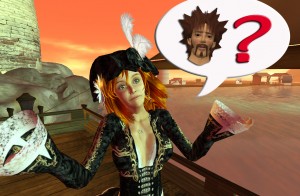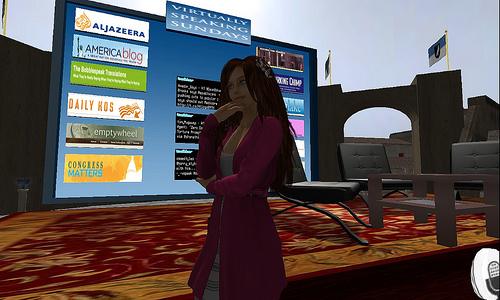SHUFFLING BITS AND PIECES.
Shuffling bits and pieces around in novel ways is the essence of invention. It is not often portrayed that way. Think of the cartoon image of a man with a light bulb floating in the air above his head, turning on to signify a great idea coming from nowhere. But, as James Burke explained in the documentary, ‘Connections’, “at no time did an invention come out of thin air, into somebody’s head. You just had to put a number of bits and pieces that were already there together in the right way”. This essay is an example of what he meant. In order to write it, I gathered research material from other books, pod casts, blogs, videos etc. From these I extracted relevant facts, analogies, visualizations and so on that helped clarify my thoughts regarding the themes of the essay. These bits and pieces were then shuffled around, put together in new ways and sometimes changed slightly in order to make them more relevant to whatever point I was trying to get across. Each of the authors whose work was used by me as research material, in turn, did pretty much the same thing. Each one took bits and pieces that already existed in other sources and recombined them in the right way to represent his or her own ideas.
You can imagine taking this essay and surrounding it with the reference material used in its development, with whatever was most influential placed nearest and the least relevant placed furthest away. Imagine, also, that the same thing applied to each source of reference: it too was surrounded by whatever was used to research its ideas. As you traced the ideas I explored in this essay to their sources, you would find that what I call ‘my’ ideas are really a bundle of fragments of other people’s ideas put together in a new way. You would see that this essay is a consequence of the shape of neighbouring research material, just as any one piece of research material is, in turn, a consequence of the shape of its neighbours. As you follow one fragment from my essay at the centre to works far out on the periphery, ‘my’ ideas would become more and more different as it is altered slightly by each individual author tweaking it in order to better suit the point he or she wants to get across.
Later on, we will encounter this image again, albeit in a slightly different form and attributed to another author. Before we get to that, though, we need to consider that ‘selves’ come into existence much like inventions or essays do. That is, by collecting bits and pieces that already exist and putting them together in the right way.
The notion of constructing a self feels more literal in an online world like SL. After all, pretty much the first thing anyone does after logging-on for the first time is to start editing their avatar’s appearance so it looks less like ‘Ruth’ and more like whatever they had in mind. For the majority of people, it becomes apparent that sculpting your avatar into the ideal representation is no easy task. And what do people do when a task turns out to be too hard or time consuming? They pay someone else to do it for them.
So you hit the stores and you grab a pre-designed body, prim hair, maybe a new pair of eyes, walk and posture animations and whatever else takes your fancy. This collection of other people’s designs is then put together in whatever way seems best to you, maybe tweaked a bit if the ‘modify’ option permits. And there you are, a walking, talking, posturing ensemble of other people’s bits and pieces. But after only a short while, it all stops feeling like a collection of other people’s prims, textures, and scripts and starts to feel like ‘you’. This is re-inforced by the people you meet, who also identify your avatar as ‘you’ regardless of whether you designed it all yourself from scratch, or just pieced together bits and pieces that already existed.
In RL you don’t exactly get to fiddle with options to change your body, so what sense does it make to say your self is constructed from pre-existing bits and pieces? We can get an idea of how such a thing might come about by looking at an experiment used in developmental psychology, known as the ‘visual cliff’. A child aged about 12 months is placed at the edge of what looks like a sheer drop, but is in fact traversable thanks to a glass bridge. Whether or not the infant crawls over the glass depends on its mother. Whenever small children encounter a situation they are unsure of, they look to a trusted individual’s face. If that face looks fearful (actually, during the visual cliff experiment the baby is in no real danger) the child will not cross. On the other hand, if Mother looks encouraging, the child is much more likely to traverse the glass.
But, whose fear or confidence is it? The child looks to a trusted individual and adopts the action that mirrors whatever emotion was evident on that face: the child’s actions copy the mother’s emotions. Developmental psychologists call this sort of thing ‘Social Referencing’. AI researcher and philosopher Doug Hoffstadter describes the human brain as ‘a universal machine’, saying, “our neural hardware can copy arbitrary patterns… beings have the capacity to model inside themselves other beings they run into, to slap together quick-and-dirty models of beings they encounter only briefly, to refine such course models over time”. People are prolific imitators. We observe each other’s styles, habits and postures. We absorb each other’s jokes, accents, catchphrases, analogies, metaphores, tales, memories and sometimes we incorporate such things into our own lives. We retell jokes, we adopt a style or a walk or a catchphrase and use it as part of our own repertoire until, after a while, it feels as much like a part of ourselves as our own limbs do. As Hoffstadter said, “we are all curious collages… each of us is a bundle of fragments of other peoples’ souls, simply put together in a new way”.
This notion of a self as ‘a bundle of other people’s souls’ was turned into an abstract painting called ‘I At the Centre’ by David Oleson. Hoffstadter’s description of it may sound familiar: “‘I’ is a consequence of the shape of all its neighbours. Their shapes, likewise, are consequences of the shapes of their neighbours and so on. As one drifts out towards the periphery, the shapes gradually become more and more different from each other”.
The fragments from which ‘I’ is made need not come from people someone has actually met. Humans, after all, are the storytelling animal. People are influenced by folktales, myths, legends, biographies of people they never met and historical accounts of events they did not witness. When photos and movies came along we no longer needed to embellish in our heads those people and places we only read or heard about in stories. We can see them directly, or rather we seem to. What a TV, cinema screen and computer monitor really show are ever-changing 2-D arrays of pixels, but the mind interprets it as coding for 3-D situations evolving over time. Such images could be of people, places and events that do exist and are currently happening; that did exist but no longer; that did not exist but might do in the future; that could never exist at all.





